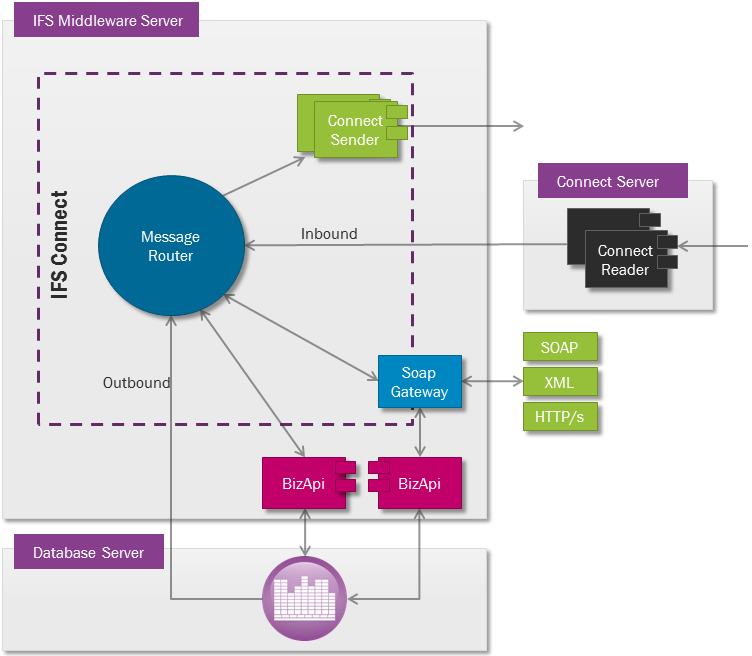Message Routing
Message routing describe queuing and dispatching to different targets of a
message from/to IFS Applications. This will be based on the message type and/or
the content of the message.

The picture shows IFS Connect with the central Message
Router
Following points below are a summary of the Message Routing functionality.
- All inbound messages that are received by IFS Connect and outbound messages that
are send from IFS Connect go through the Message Routing rules.
- The routing rule determines the destination address(s), transport
connector (destination) type, transformers and envelop to be used with the
message.
- Routing rule may be a
Content base routing rule or a Location base routing
rule.
Note: In content base routing rules we compare the content of
the message header/body with the given values. In location base routing rules
we compare the details of the location from where we got the message. e.g. name
and/or the directory of a file.
- Both Content base routing rules and Location base routing rules can apply
for
Inbound message routing
while
outbound
message routing will only be handled by using content base routing
rules.
- In routing it is vital to match at least one condition.
- If more than one routing rule matches a message, the one with the greatest
number of conditions, content and location based, will be used.
- When there are routing rules with equal numbers of conditions that matches,
the first found routing rule will be used.
- You can route a message to more than one destination
by setting several addresses to a rule.
- For asynchronous messages you can define a response address in the same
rule.
- Destination types include Business API's and Transport Connectors such
as FTP, Mail, File, Http(s) etc.

